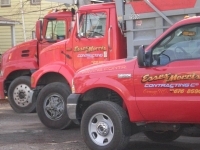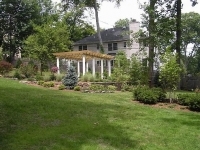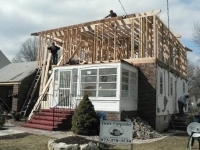Black History Month: Facts, History and Locations Related to Black History Month
Cape May recently opened a Harriet Tubman Museum:
That list includes the Liberty Bell, which may not be a traditional Underground Railroad site itself, but it does have an interesting history presented as you walk through the Liberty Bell Center.
There are markers and other underground railroad sites in and around Philly:
https://www.visitphilly.com/media-center/press-releases/philadelphias-underground-railroad-sites/
https://www.visitphilly.com/articles/philadelphia/underground-railroad-in-philadelphia/
In order to add a comment – you must Join this community – Click here to do so.
Featured Events
Sponsored Business
Promote your business here - Businesses get highlighted throughout the site and you can add a deal.

















My goal for this February is to visit two ("2") or three ("3") underground railroad sites in the NJ, NY and PA area in celebration of Black History month.
URL: https://en.wikipedia.org/wiki/List_of_Underground_Railroad_sites#New_Jersey
Underground Railroad Locations (excerpted from the above URL):
List of Underground Railroad sites located in New Jersey:
Grimes Homestead, Mountain Lakes, New Jersey
Holden Hilton House — Jersey City[40]
Thomas Vreeland Jackson and John Vreeland Jackson house — Jersey City[40]
Mott House — Lawnside Borough[17][41]
Red Maple Farm — Monmouth Junction[42]
Grimes Homestead — Mountain Lakes[17][41]
Rhoads Chapel — Saddlertown, Haddon Township[43]
Bethel AME Church — Springtown[17][41]
Van Leer Log Cabin — Swedesboro[44]
Mount Zion African Methodist Episcopal Church — Woolwich Township[17][41]
List of Underground Railroad sites located in New York
Harriet Tubman, Brown John, Gerrit Smith
Stephen and Harriet Myers House — Albany[23][45]
Allegany County network: Baylies Bassett — Alfred and others (including Henry Crandall Home — Almond; William Sortore Farm — Belmont); Marcus Lucas Home — Corning;
Thatcher Brothers — Hornell, McBurney House — Canisteo (now in town of Hornellsville);
William Knight — Scio[46][47]
Harriet Tubman House and Thompson AME Zion Church — Auburn[17][48]
North Star Underground Railroad Museum — Ausable Chasm[17][46]
Michigan Street Baptist Church — Buffalo[26]
Cadiz, Franklinville area network: Merlin Mead House and others, including John Burlingame, Alfred Rice, Isaac Searle, and the owner of the Stagecoach Inn[49]
McClew Farm at Murphy Orchards — Burt[23][50]
St. James AME Zion Church — Ithaca[17][45]
John Brown Farm State Historic Site — Lake Placid[17]
Starr Clock Tinshop — Mexico[17]
Abolitionist Place — New York City: Brooklyn. Abolitionist Place is a section of Duffield Street in downtown Brooklyn that used to be a center of anti-slavery and Underground Railroad activity. New York City was one of the busiest ports in the world in the 19th century. Some freedom seekers traveled aboard ships amongst cargo, like tobacco or cotton from the Southern United States and arrived in Brooklyn a few blocks away from Abolitionist Place. Underground Railroad conductors helped these freedom seekers, as well as people who traveled north on the Underground Railroad. They were provided needed shelter, like at the Plymouth Church of the Pilgrims; clothing; and food.[51]
Plymouth Church of the Pilgrims — New York City: Brooklyn[17][45]
Niagara Falls Underground Railroad Heritage Center — Niagara Falls[48]
Buckout-Jones Building — Oswego[23]
Edwin W. and Charlotte Clarke House — Oswego[17][23]
Hamilton and Rhoda Littlefield House — Oswego[23]
John B. and Lydia Edwards House — Oswego[17][23]
Orson Ames House — Mexico, Oswego County[17]
Oswego Market House — Oswego[23]
Oswego School District Public Library (presumably the Oswego City Library) — Oswego[23]
Richardson-Bates House Museum — Oswego[23]
Tudor E. Grant — Oswego[23]
Gerrit Smith Estate and Land Office — Peterboro[17]
Samuel and Elizabeth Cuyler House Site — Pultneyville[23]
Foster Memorial AME Zion Church — Tarrytown[17][45]
Eber Pettit Home - Versailles[49]
List of Underground Railroad sites located in Pennsylvania:
People's Hall in Ercildoun
Kaufman's Station — Boiling Springs[23]
Oakdale — Chadds Ford[17]
John Brown House — Chambersburg[17]
Dobbin House — Gettysburg[26]
Thaddeus Stevens Home and Law Office – Lancaster[23]
Johnson House — Philadelphia[17]
Liberty Bell, Independence National Historical Park — Philadelphia[26]
White Horse Farm — Phoenixville[17]
Hovenden House, Barn and Abolition Hall — Plymouth Meeting[60]
Bethel AME Zion Church — Reading[17]
F. Julius LeMoyne House Washington[17]
William Goodrich House — York[23][26]
Mortonson–Van Leer Log Cabin — Van Leer Cabin[61]